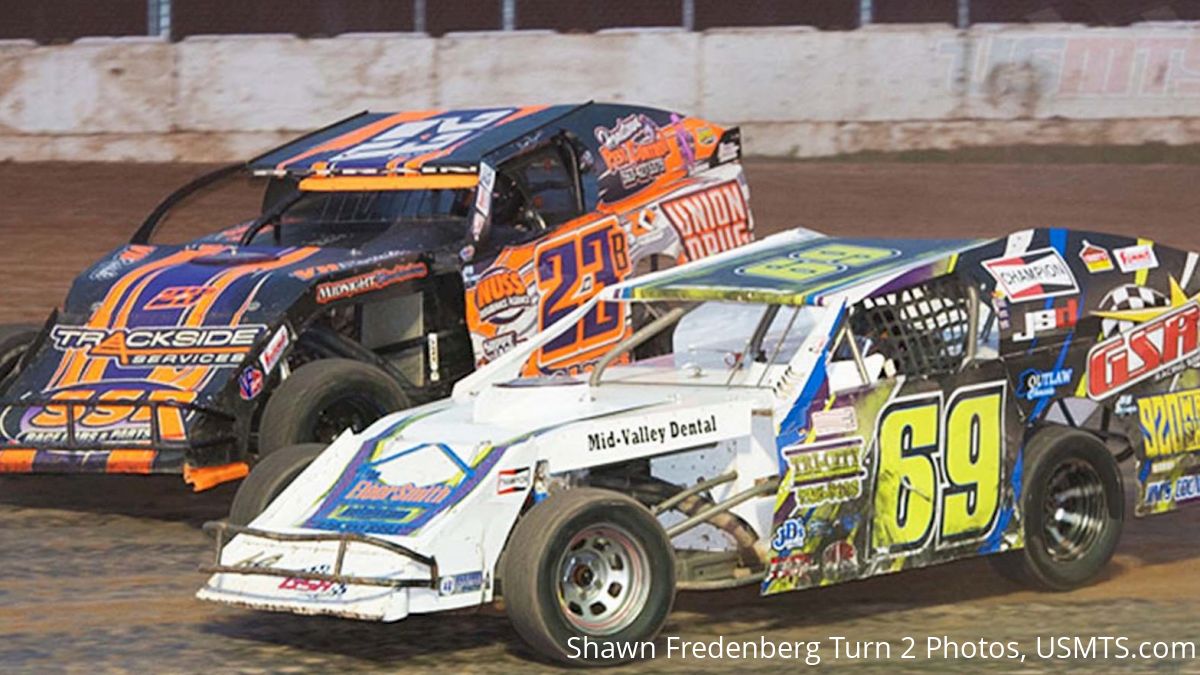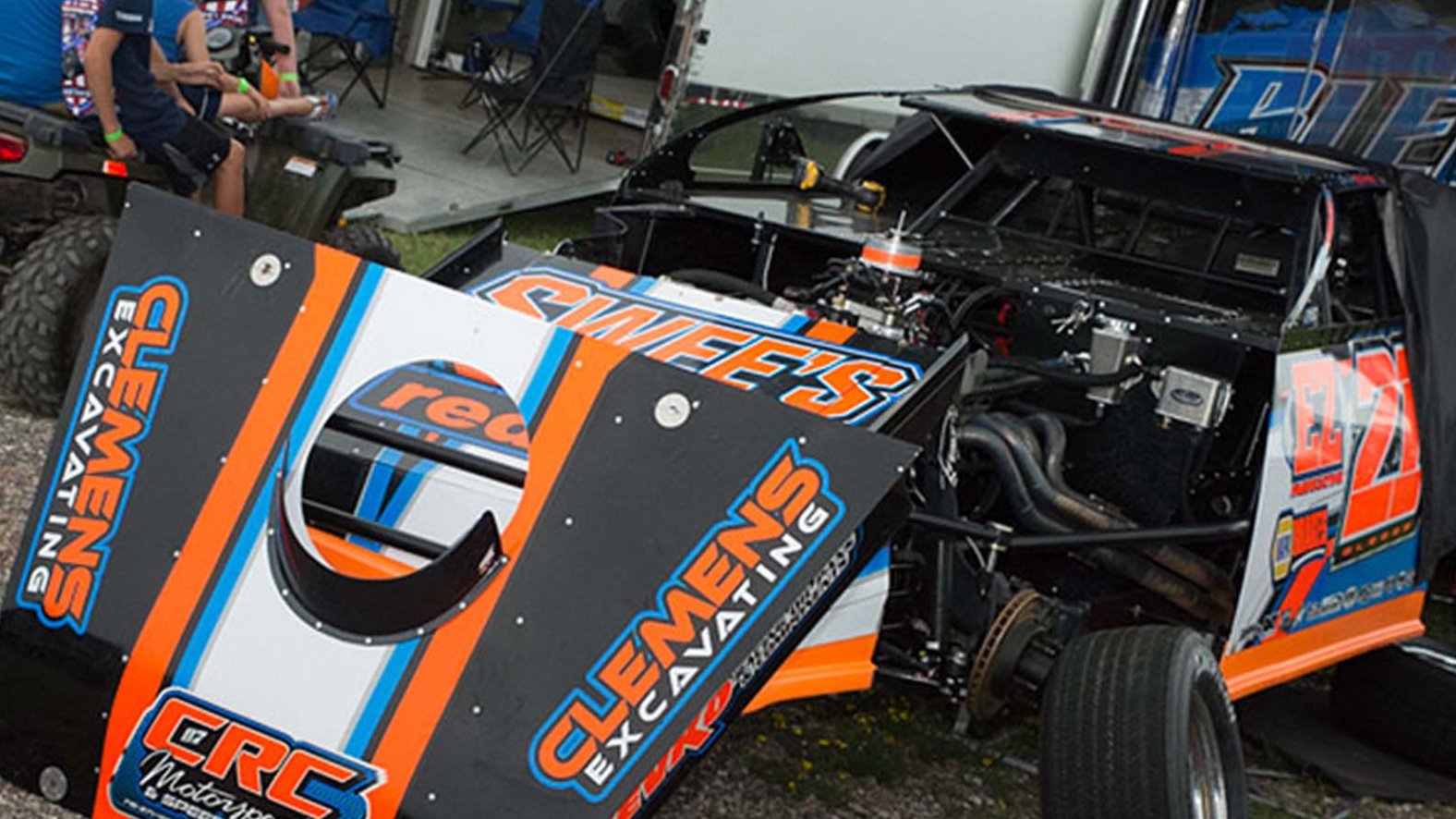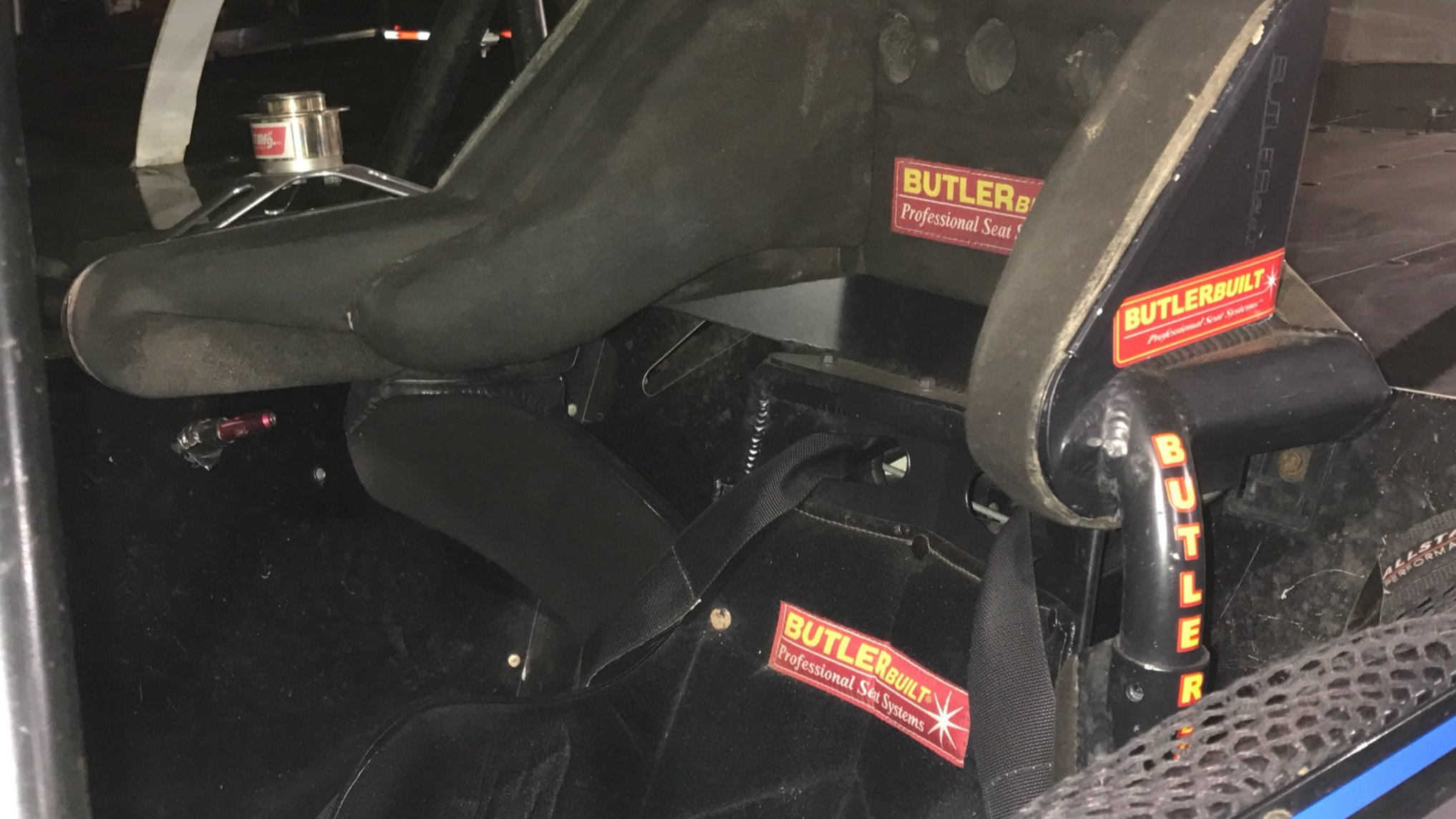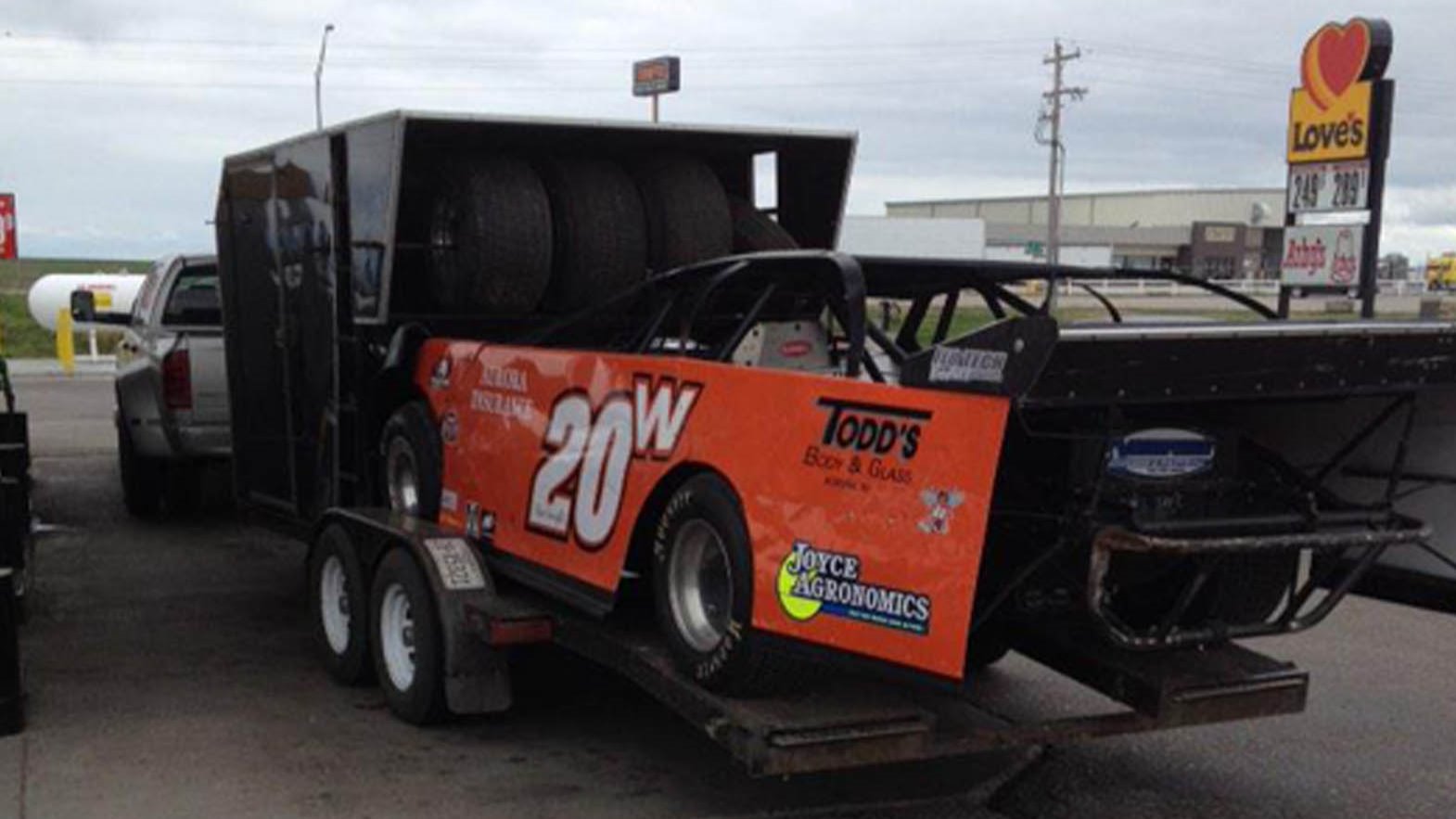How Dirt Modifieds Conquered The World
How Dirt Modifieds Conquered The World
Dirt Modifieds are taking over the world and Jonathon Masters tells you why.

By Jonathon Masters
In terms of car counts and geographic prevalence, the Dirt Modified class is second to none.
In most areas of the country, with the exception of the Southeast and isolated pockets, Dirt Modifieds outnumber all other classes two to one. Go to your local track and odds are that if Modifieds are on the schedule they will have the largest car count by far. In the region along the Mississippi River, they have taken over as the premier class at most race tracks.
How did this happen?
The fascinating thing about the Modified boom is that it is relatively recent. The class has been on the rise in major way since the mid-1990s. While it may have been trend that's taken 25 years of steady escalation, it has been a quick progression in the scale of more than 100 years of American motorsports.
Sprints as we know them have been around since 1958. Midgets have been around since the '30s. Those classes are American traditions that haven't seen large scale changes in over 50 years. Dirt Late Models, which Modifieds most closely resemble, have been in a recognizable form since the '60s.
While it's true there are many classes across the racing world that share the name "modified," the Dirt Modified division most closely associated with the term saw its roots in 1979. That is the year IMCA debuted it's E-Mod (Economy Modified) class -- a division devoted to affordable racing. For decades to come, the default name of most divisions was E-Mod. The popularity of the class caught fire and spread to the Midwestern areas outside IMCA's regional dominance. Soon, the United Midwest Promoters and a host of others were sporting variations of the E-Mod.

In Late Model-dominated areas, Modifieds continued to be a support division, but they were gaining ground in the Great Plains states. That is where the Dirt Modifieds continue to thrive to this day. In regions where UMP held the greatest sway, the class continued to add cars through the 1990s, and by the time the late-'90s rolled around, the class had dethroned all classes in terms of car count.
If not for the vision of one family, this might have been where the story of the growth of Modified racing ended.
In 1999, another leap was made for the class. The Staley family purchased the USMS the year prior and renamed it the United States Touring Modified Series. Modified racing took its next step toward today's success. The USMTS ran across a large region, rivaling Dirt Late Models in terms of technology and travel. The teams racing this series weren't all weekend warriors, and its drivers quickly became racing superstars.
Kelly Shryock, Ryan Gustin, Rodney Sanders, Stormy Scott, Jason Hughes, and many more became household names.
IMCA was also still making leaps in its Modified ivision. The Super Nationals at Boone, Iowa, has grown into one of the most impressive events in all of motorsports. As a full week of uninterrupted racing with hundreds of teams and thousands of fans, it has become an event that brings the town of Boone and the rest of the racing world to a standstill to watch in awe.
Likewise, UMP (now DIRTcar Modifieds) has continued to bring its A-game to the class. The series has built its modified championship to the point of obsession for many teams. Racers will run as many features as possible while keeping an eye on where other points battlers are racing to maintain an edge. The purses keep rising, and the shows continue to flourish. In short, no matter what governing body these modified racers are running they have a strong passion that is driving them.
Now that we understand their history, we can look at the key aspects that have led to this escalation. You can boil down these aspects into three main items: 1) affordability compared to other classes at the entry level, 2) innovation and expansion from the manufacturers, and 3) passion.

Affordability: The Dirt Modified class was created with expense in mind. True, costs of racing have went up across the board, but that was OK because Modifieds had their own solution with the creation on the B-Mod class. The big boys of Modified racing are always going to spend a lot -- it is just an inevitable part of racing among any marquee division -- but the key to large car counts is to involve the weekend warrior who is looking to get started. The Modifieds have done this more successfully than any racing class in history. With good car counts, the fans stay engaged and the purses rise to a level that keeps those spending big bucks happy.
Innovation and Expansion from the Manufacturers: There was a time in the 1990s when most big box manufacturers would tell you that the modified market was a tiny blip on their radars. Now the Modifieds pay for the radar, and the manufacturers know it. The industry puts priority where the most cars are because that's where the money is located. Right now, the cars are all Modifieds. That means they are the ones buying the most parts. Every manufacturer has jumped on the market out of necessity, and it has helped bolster the Modified market.
Staying on the second item, I'm going to tell you a joke only people in Iowa and Missouri will get.
How do you create a modified chassis builder? Get somebody who works for a modified chassis builder fired.
In the past 20 years, there have been so many modified chassis companies created that you could fill a field of 24 cars each representing a different chassis brand from the those two decades. And that is actually a good thing. It keeps innovation alive and creates more choices and opportunities that help keep costs down and the racing dynamic interesting. Plus, with such a large amount of demand for cars, it takes a lot of companies to provide for the market.
That also keeps the third factor alive.

Passion. The people in Modified-heavy areas of the country bleed this stuff. It has become woven in the culture of the Great Plains states and makes up who they are as racers and fans. It's also this passion that makes a racer from Southern Indiana drive five hours on a Sunday night to a State Fair in Illinois to make sure he doesn't lose any DIRTcar points to one who only had to drive across town.
Passion is what makes that start up chassis builder convert his garage to a manufacturing area filled with welder smoke and grease. Right now, the Dirt Modifieds have conquered the world because they have more passion for their sport than the next three divisions combined.
Better still, it doesn't show any signs of slowing down.
- Jonathon Masters has a lifelong connection with dirt racing. His family has owned and operated MasterSbilt Race Cars manufacturing dirt late model chassis for 35 years. He attended college in North Carolina for motor sports management and has written for various industry publications. Jonathon was an account executive at The International Motorsports Industry Show, founder of the Heartland Auto Racing Show, and has been a racing industry professional for over a decade.
Turn Your Child Into A Dirt Superstar
Get The Races To Run On Time
Efficient Operation Of Regional Series Is Key
Track Promoters Spend Big On Big Shows
The Iconic Brickyard 400 Needs A Boost
It's Time For NASCAR To Get Dirty
Big Changes Are Coming For NASCAR
Drivers Must Get It Right (And Left) At Sonoma
Sign up for our newsletter to stay current on all the latest racing news and your favorite content from FloRacing.
In terms of car counts and geographic prevalence, the Dirt Modified class is second to none.
In most areas of the country, with the exception of the Southeast and isolated pockets, Dirt Modifieds outnumber all other classes two to one. Go to your local track and odds are that if Modifieds are on the schedule they will have the largest car count by far. In the region along the Mississippi River, they have taken over as the premier class at most race tracks.
How did this happen?
The fascinating thing about the Modified boom is that it is relatively recent. The class has been on the rise in major way since the mid-1990s. While it may have been trend that's taken 25 years of steady escalation, it has been a quick progression in the scale of more than 100 years of American motorsports.
Sprints as we know them have been around since 1958. Midgets have been around since the '30s. Those classes are American traditions that haven't seen large scale changes in over 50 years. Dirt Late Models, which Modifieds most closely resemble, have been in a recognizable form since the '60s.
While it's true there are many classes across the racing world that share the name "modified," the Dirt Modified division most closely associated with the term saw its roots in 1979. That is the year IMCA debuted it's E-Mod (Economy Modified) class -- a division devoted to affordable racing. For decades to come, the default name of most divisions was E-Mod. The popularity of the class caught fire and spread to the Midwestern areas outside IMCA's regional dominance. Soon, the United Midwest Promoters and a host of others were sporting variations of the E-Mod.

In Late Model-dominated areas, Modifieds continued to be a support division, but they were gaining ground in the Great Plains states. That is where the Dirt Modifieds continue to thrive to this day. In regions where UMP held the greatest sway, the class continued to add cars through the 1990s, and by the time the late-'90s rolled around, the class had dethroned all classes in terms of car count.
If not for the vision of one family, this might have been where the story of the growth of Modified racing ended.
In 1999, another leap was made for the class. The Staley family purchased the USMS the year prior and renamed it the United States Touring Modified Series. Modified racing took its next step toward today's success. The USMTS ran across a large region, rivaling Dirt Late Models in terms of technology and travel. The teams racing this series weren't all weekend warriors, and its drivers quickly became racing superstars.
Kelly Shryock, Ryan Gustin, Rodney Sanders, Stormy Scott, Jason Hughes, and many more became household names.
IMCA was also still making leaps in its Modified ivision. The Super Nationals at Boone, Iowa, has grown into one of the most impressive events in all of motorsports. As a full week of uninterrupted racing with hundreds of teams and thousands of fans, it has become an event that brings the town of Boone and the rest of the racing world to a standstill to watch in awe.
Likewise, UMP (now DIRTcar Modifieds) has continued to bring its A-game to the class. The series has built its modified championship to the point of obsession for many teams. Racers will run as many features as possible while keeping an eye on where other points battlers are racing to maintain an edge. The purses keep rising, and the shows continue to flourish. In short, no matter what governing body these modified racers are running they have a strong passion that is driving them.
Now that we understand their history, we can look at the key aspects that have led to this escalation. You can boil down these aspects into three main items: 1) affordability compared to other classes at the entry level, 2) innovation and expansion from the manufacturers, and 3) passion.

Affordability: The Dirt Modified class was created with expense in mind. True, costs of racing have went up across the board, but that was OK because Modifieds had their own solution with the creation on the B-Mod class. The big boys of Modified racing are always going to spend a lot -- it is just an inevitable part of racing among any marquee division -- but the key to large car counts is to involve the weekend warrior who is looking to get started. The Modifieds have done this more successfully than any racing class in history. With good car counts, the fans stay engaged and the purses rise to a level that keeps those spending big bucks happy.
Innovation and Expansion from the Manufacturers: There was a time in the 1990s when most big box manufacturers would tell you that the modified market was a tiny blip on their radars. Now the Modifieds pay for the radar, and the manufacturers know it. The industry puts priority where the most cars are because that's where the money is located. Right now, the cars are all Modifieds. That means they are the ones buying the most parts. Every manufacturer has jumped on the market out of necessity, and it has helped bolster the Modified market.
Staying on the second item, I'm going to tell you a joke only people in Iowa and Missouri will get.
How do you create a modified chassis builder? Get somebody who works for a modified chassis builder fired.
In the past 20 years, there have been so many modified chassis companies created that you could fill a field of 24 cars each representing a different chassis brand from the those two decades. And that is actually a good thing. It keeps innovation alive and creates more choices and opportunities that help keep costs down and the racing dynamic interesting. Plus, with such a large amount of demand for cars, it takes a lot of companies to provide for the market.
That also keeps the third factor alive.

Passion. The people in Modified-heavy areas of the country bleed this stuff. It has become woven in the culture of the Great Plains states and makes up who they are as racers and fans. It's also this passion that makes a racer from Southern Indiana drive five hours on a Sunday night to a State Fair in Illinois to make sure he doesn't lose any DIRTcar points to one who only had to drive across town.
Passion is what makes that start up chassis builder convert his garage to a manufacturing area filled with welder smoke and grease. Right now, the Dirt Modifieds have conquered the world because they have more passion for their sport than the next three divisions combined.
Better still, it doesn't show any signs of slowing down.
- Jonathon Masters has a lifelong connection with dirt racing. His family has owned and operated MasterSbilt Race Cars manufacturing dirt late model chassis for 35 years. He attended college in North Carolina for motor sports management and has written for various industry publications. Jonathon was an account executive at The International Motorsports Industry Show, founder of the Heartland Auto Racing Show, and has been a racing industry professional for over a decade.
Exclusive Content
Weekly Columns by Jonathon Masters
Why Dirt Late Models Look That WayTurn Your Child Into A Dirt Superstar
Get The Races To Run On Time
Efficient Operation Of Regional Series Is Key
Track Promoters Spend Big On Big Shows
Weekly Columns by JD Hellman
Ryan Blaney Fits Best With PenskeThe Iconic Brickyard 400 Needs A Boost
It's Time For NASCAR To Get Dirty
Big Changes Are Coming For NASCAR
Drivers Must Get It Right (And Left) At Sonoma
Like what you see?
Sign up for our newsletter to stay current on all the latest racing news and your favorite content from FloRacing.